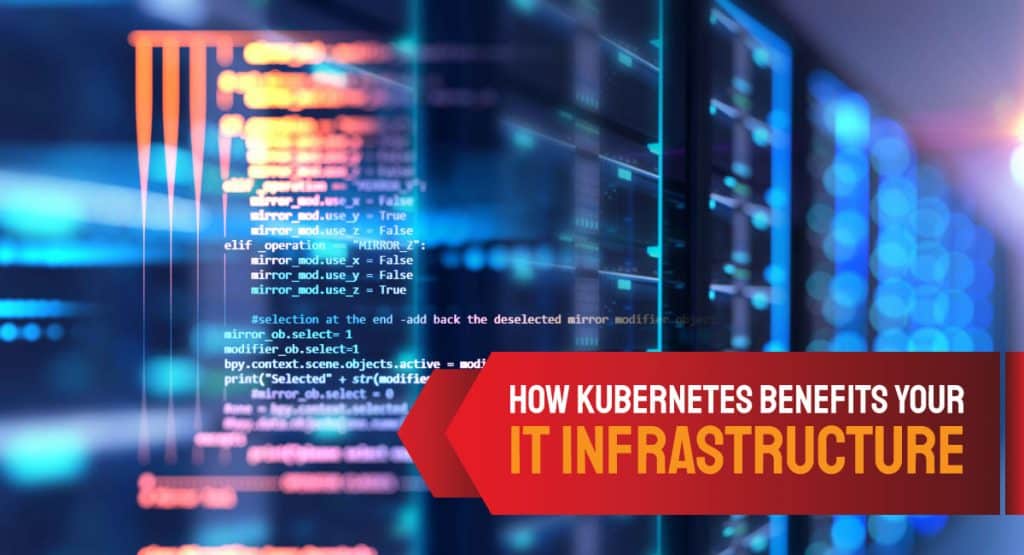12 Reasons Your Enterprise Needs Hyperconverged Infrastructure
Why and when does an enterprise require hyperconverged infrastructure?
Enterprises and businesses in all sectors strive for the most efficient infrastructure. The explosion of business data poses additional challenges to IT decision-makers. Weak storage solutions could be disastrous for a business. Organizations need to invest in a reliable IT solution that will bring together all IT infrastructure components. They need a solution that will increase overall workplace productivity and reduce cost.
Hyperconverged infrastructure can be the perfect solution for enterprises. It provides uniform scaling along with the simplicity of deployment and ease of management. These features of HCI translate into operational efficiency and reduced costs. As businesses slowly emerge from the fragile economy caused by the coronavirus impact, hyperconverged infrastructure can help them come back strongly.
Let’s have a look at what hyperconverged infrastructure is and how you can benefit from it.
What is hyperconverged infrastructure?
Hyperconverged infrastructure (HCI) is an IT framework. It combines computing, networking, and storage into a single turnkey platform to increase scalability and reduce data center complexity. Hyperconverged platforms usually run on standard, off-the-shelf servers and include a hypervisor for virtualized computing and networking and software-defined storage. Hyperconverged platforms are designed for scalability. For example, it allows you to cluster multiple nodes for creating pools of shared storage and compute resources.
Compared to traditional enterprise storage infrastructure, you can customize hyperconverged infrastructure to make it flexible and easy to manage. It can provide the agility of infrastructure without relinquishing control of your hardware.
Why and when does an enterprise need hyperconverged infrastructure?
Hyperconverged infrastructure offers scalability, reliability, data protection, and more. However, it does not mean HCI is for everyone. It is not recommended for applications that need low latency and contend with high I/O rates. For applications with the right workload, it proves useful in addition to the data center reducing costs and simplifying IT.
Initially, Virtual Desktop Infrastructure and other general-purpose workloads with fairly predictable resource requirements started using hyperconverged infrastructure systems. However, it has become a suitable platform for enterprise applications, private cloud, edge computing deployments, and databases. In other words, a hyperconverged infrastructure system can be used by smaller enterprises that need faster and more reliable storage solutions.
With the landscape of technology evolving faster than ever before, enterprises are increasingly moving to the cloud. As workload requirements grow, organizations realize the need to add nodes to their system. To achieve this, they need a 100% software-defined storage solution that aggregates the storage and compute performance between servers and nodes.
That is why enterprises need a hyperconverged infrastructure system. It can provide such necessary solutions, replace silos of servers, storage, and virtualization, and avoid the need for separate management tools and processes.
As technology begins to settle down, the rate of HCI adoption is expected to increase soon. So, it is crucial to know its benefits and make an informed decision.
Read more: 11 Tech Trends That Will Disrupt Businesses in The Next 2 Years
12 benefits of hyperconverged infrastructure
1. Simpler design
Though hyperconverged infrastructure is not cloud-based, it is ideal for the cloud era. It comes with a framework that has a flexible and simple design. Hyperconverged infrastructure eliminates silos and other barriers that slow down development. In this way, it helps the organization to accomplish most tasks more swiftly. In the current fast-paced world, having the ability to act quickly is vital.
2. Scalability
Scalability has been the top reason for many enterprises to choose HCI. Each hyperconverged infrastructure appliance is a self-contained unit that is designed from the ground up that maximizes compatibility. It allows expansion of data center capacity by simply attaching an additional unit.
An HCI cluster is made up of preconfigured, and self-contained building blocks called nodes. Since nodes can be pre-optimized, admins can easily add them without having to contend with integration issues.
3. Ease of implementing hybrid systems
Hyperconverged infrastructure combines virtualized computing and networking with software-defined storage. This facilitates identical software deployment, whether hosted on the cloud or at the data center, meaning that a team can quickly deploy applications on-premise and combine them with a public cloud. That makes it perfect for any enterprise that plans to build a hybrid infrastructure.
Read more: Hybrid Cloud Infrastructure: How It Benefits Your Business
4. Simplified management
With a traditional system, an organization would require specialists to manage each of the different elements: storage, compute, and networking. Thankfully, a hyperconverged infrastructure simplifies this management issue. It allows consultants or even general tech staff to oversee the entire setup.
Administrators can work from a single management platform that consolidates administrative tasks. It helps them eliminate management silos that come with traditional infrastructure. Additionally, it frees up IT personnel for other critical tasks such as focusing on new initiatives.
5. Reliability
The inbuilt multi-node architecture of hyperconverged infrastructure offers a highly reliable system. Since fault tolerance and disaster recovery are built into an HCI platform, other nodes can compensate for one node’s failure. This aspect also includes self-healing capabilities that automatically identify and address issues. Admins can add or replace nodes without workload disruptions.
Read more: How Kubernetes benefits your IT infrastructure?
6. Improved performance
Hyperconverged infrastructure is capable of improving workload performance, even when running multiple application types. It can meet the performance demand of varying workloads, including virtual desktop infrastructure. It can also accommodate changing performance requirements without the need to reconfigure the entire hardware.
7. Efficient data storage and protection
Since data storage and protection are a part of its infrastructure, hyperconverged infrastructure can make these processes more straightforward and efficient. It can provide data protection functionalities such as data duplication or snapshots. Disaster recovery and prevention is also made easy with hyperconverged infrastructure.
Being software-centered, HCI gives an enterprise the opportunity for regular backups using public cloud storage. Scattering data across multiple nodes, HCI ensures that the entire business is not affected when just one piece of hardware goes down.
8. Automated infrastructure
Automation has been impossible for most complex IT infrastructures. However, in HCI storage, servers and infrastructure support services are virtualized, making automation of routine operations achievable when centralized management tools are implemented. It enables administrators to quickly deploy cloud infrastructure, automate complex processes, and eliminate time-consuming manual tasks.
9. Workload consolidation
Over the years, HCI products have been supporting workloads beyond back-office applications and virtualized desktop infrastructure. Hyperconverged infrastructure’s ability to consolidate multiple IT functions into the same platform is most beneficial for an organization. It makes it easier to migrate virtual machines between different appliances or even between data centers.
10. Easy upgrades
Hyperconverged infrastructure provides a unified environment that makes upgrading hardware and software much faster and easier. It can streamline and simplify upgrades, eliminating the need to balance independent systems. It provides a flexible and adaptable environment for restructuring systems or hardware. Besides, it does not have risks that come with other systems. Hyperconverged infrastructure offers a unified platform that uses integrated technologies and standard protocols. It makes it easier to implement performance upgrades.
11. Software-defined infrastructure
Software-defined capabilities help in driving operations and maintaining the overall health of the environment. These capabilities make automation more comfortable to implement than with legacy systems. Software-defined infrastructure can quickly and easily accommodate upgrades, multi-storage types, and new components. It can thus simplify IT, handle diverse and changing workloads while improving overall efficiency.
12. Lower costs
Most enterprises adopt hyperconverged infrastructure because it reduces the running cost of workloads throughout their life cycles. It can consolidate hardware resources and maximize their use. Moreover, it will tremendously reduce the need for more servers and minimize power and cooling requirements.
Since you can build hyperconverged infrastructure with commodity hardware, organizations can avoid expenses that come with deploying specialized servers, storage, or network components.
Hyperconverged infrastructure uses direct-attached storage. It helps enterprises avoid the high cost that comes with deploying and managing a SAN. With the help of a reference architecture, they can buy HCI software and build their HCI platforms.
How can organizations adopt hyperconverged infrastructure?
Organizations must adopt hyperconverged infrastructure to reduce the complexity associated with network management across servers and storage. The best approach is to make a trial with a small project and then scale up as the need arises.
If you want to adopt HCI, you can start by surveying your existing infrastructure and figure out what you want to achieve by moving to HCI. It will help you refine your needs and identify what features you will require so that you get to focus on the right vendor offerings.
To tackle the toughest challenges, organizations need to adopt solutions that deliver. Consider these factors when adopting a hyperconverged infrastructure:
- Adequate support: The right HCI solution must support a broad set of application deployment models. It needs to be fast and consistent to run your mission-critical apps.
- Scalability: The right solution should complement your current IT needs and adapt as those needs evolve.
- Seamless integration: The HCI solution should be flexible enough to support multiple hypervisors, whichever cloud environment most appropriate for them.
Learn more: Take a look at how InfinCE, an infinite cloud platform, ensures secured work-collaboration within an organization and helps enhance company efficiency & growth!
Over to you
Organizations need reliable and faster storage performance now more than ever before. Hyperconverged infrastructure provides a path to secure and modern infrastructure. Most organizations consider the solution critical to their strategic IT priorities. What about you?
Chat with Fingent, the top custom software development company, to get answers to all your hype converged infrastructure questions.
Stay up to date on what's new

Recommended Posts

28 Jul 2022 B2B
When Does Your Business Need Custom Software Development Solution – Evaluate Now!
Custom software tackles the specific needs of users more comprehensively than traditional off-the-shelf packages. Efficiency, scalability, lower integration cost, uniquely tailored features, functions, profitability, and independence are a few of……

01 Dec 2020
Understanding Managed Services for IT: Why it Matters?
All That You Need to Know about Managed Services for IT! IT requirements evolve continually as the technology undergoes rapid changes. This has led to increased security threats to data……

07 Oct 2020 Logistics
9 Practical Examples of How IT is Helping Businesses During the Recession
Why IT is the guardian angel of businesses during a recession? Introduction Advantages of cutting-edge IT solutions 9 practical examples of how IT solutions recession-proof your business Use the……

22 Aug 2020
What Is IT Consulting? How Can It Revitalize Your Business?
Why Does Your Business Need IT Consulting Services? IT departments or on-site IT professionals have become increasingly significant for many types of organizations- small and large, today. As the COVID-19……
Featured Blogs
Stay up to date on
what's new






















































